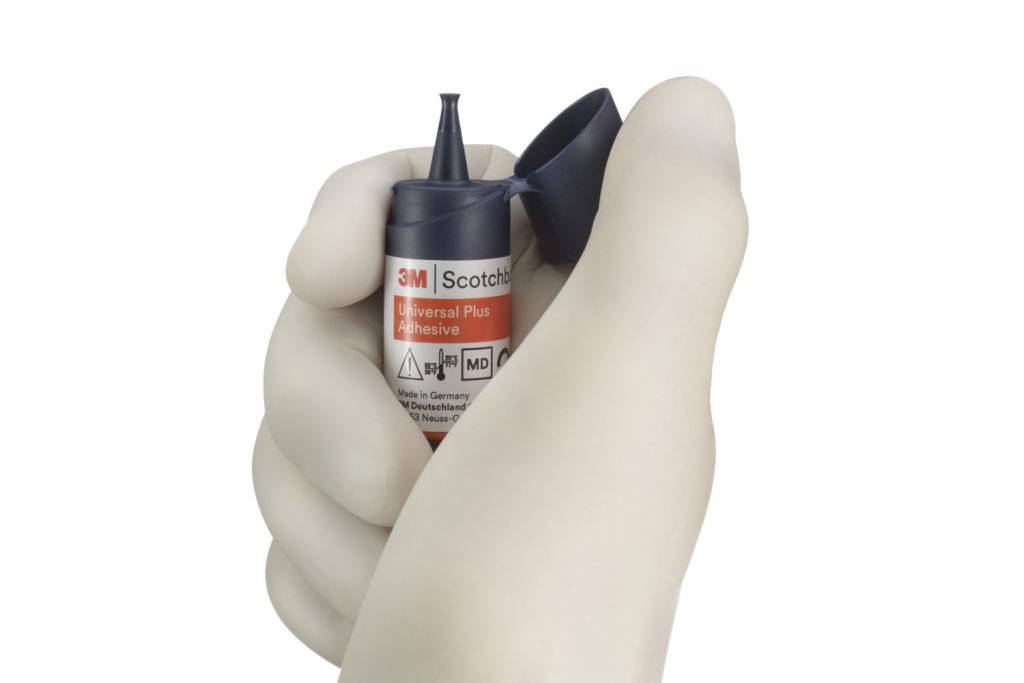Post-operative sensitivity: causes and solutions
Featured Products Promotional FeaturesPosted by: Dental Design 25th June 2022

Whilst direct restorative treatment is often regarded as some of the more straightforward work in dentistry, it isn’t without its possible complications. Post-operative sensitivity, in particular, is an issue that is more common than many practitioners would expect.
But what causes post-operative sensitivity and how can practitioners avoid it?
A deeper look into the issue
Research suggests that as many as 50% of restorative procedures utilising resin composites result in some level of post-operative sensitivity. This can cause considerable discomfort for patients, resulting in pain or discomfort when eating hot, cold and sometimes acidic or sweet foods. It may also cause residual pain that doesn’t need a trigger to activate, putting patients through significant distress. Post-operative sensitivity is more common in posterior and Class II restorations, though it may occur in any tooth that has undergone restorative treatment.
Unfortunately, in the vast majority of cases post-operative sensitivity is only rectified through the removal of the restoration in question and the procedure being repeated. This is inconvenient for patients and practitioners alike, and may lead to patients feeling like they didn’t initially received the high standard of care they expect.
Interestingly, post-operative sensitivity isn’t an issue that has one set cause. The literature surrounding this phenomenon suggests that there are various reasons behind its occurrence, which generally speaking can be split into three categories: the clinician’s technique, the health of the tooth being restored and the materials used for treatment. Every case is different, and therefore the unique tooth anatomy will come into play so clinicians may need to harness different techniques and products for the best chances of success.
Treatment techniques
One action that is associated with higher incidence of post-operative sensitivity is over etching. If the tooth surface is exposed to etching agent for too long, this can prevent the bonding agent from penetrating down to the depth that has been etched into the surface, resulting in a demineralisation zone and ongoing sensitivity.
Other potential reasons for post-operative sensitivity could be failure to remove solvent during the drying step, under curing, insufficient isolation and over drying. A dental product report written in conjunction with a dentist highlighted these issues, suggesting that each one of these miscalculations during treatment can compromise the quality of the final restoration and leave the patient in pain.
While some of these issues are easily avoided, it’s recommended to follow the manufacturer’s instructions on any solutions used during the restorative process. This way, you can reasonably prevent issues such as under-curing or any other minor mistakes that can have significant consequences.
Tooth health
In some cases, the root cause of post-operative sensitivity is directly related to the health of the tooth that has received treatment. Miniscule cracks and pre-existing cracks in the tooth structure can lead to pain developing over time post-treatment, and these issues are easily missed as they are not always visible.
Research into this area has found that, in many cases, this damage to the tooth can occur during cavity preparation. Pulpal heating may lead to irreversible dental tissue damage, and incorrect use of burs or those not ideally suited to the site has been linked to issues that are not necessarily visible until the restoration begins to exhibit post-operative sensitivity.
As such, it’s important for clinicians to assess teeth in great detail before providing restorative treatment. Proper irrigation is also necessary in order to prevent any temperature-related tissue damage.
Products make all the difference
As the old adage states, a worker is only as good as their tools. In dentistry this is especially true, and selecting the correct products to form part of your armamentarium is a vital step in order to provide the best standard of treatment. After all, even the best dentist in the world is unable to offer patients high-standard care with sub-standard products.
 Product selection can influence post-operative sensitivity in a number of ways. For example, if a composite is prone to shrinkage after placement, this could cause stresses within the tooth, resulting in sensitivity. A dental adhesive can also cause sensitivity issues, especially if microleakages occur.
Product selection can influence post-operative sensitivity in a number of ways. For example, if a composite is prone to shrinkage after placement, this could cause stresses within the tooth, resulting in sensitivity. A dental adhesive can also cause sensitivity issues, especially if microleakages occur.
As such, a smart way forward is to scour the market for solutions that help prevent post-operative sensitivity or that have been proven to result in low incidence of this problem after use.
3M Scotchbond Universal Plus Adhesive from 3M Oral Care is a universal bonding agent that is suitable for all direct and indirect bonding indications and etching techniques. It promises virtually no post-operative sensitivity, * and testers in the 2022 Dental Advisor awards highlighted this benefit in their feedback – part of the reason the product was awarded a clinical rating of 96%. Plus, it’s radiopaque* to help prevent any future misdiagnosis and bonds and seal caries-affected dentine to support minimally invasive dentistry and help preserve as much as the natural tooth structure as possible.*
Help support long-lasting outcomes
Although post-operative sensitivity is a common issue, there are steps that professionals can take to minimise the risks of it occurring. By taking the time to assess the health of the tooth as well as selecting products and techniques that support an excellent standard of treatment, you can reduce incidence of post-operative sensitivity and ensure that your patients receive a long-lasting solution that they are happy with.
For more information, call 08705 360 036 or visit www.3M.co.uk/Dental
*3M Internal Data
3M and Scotchbond are trademarks of the 3M Company.










